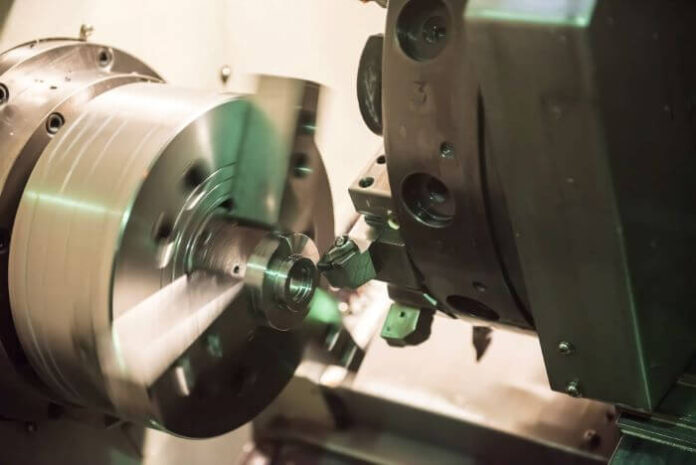The realm of metal forming and fabrication stands as a cornerstone in manufacturing, a field where precision and reliability converge to shape the very backbone of our industrial capabilities.
Among the myriad of tools and machines that make up this intricate world, press brakes hold a special place. Their role in bending and shaping metal sheets with exactitude has not only defined the efficiency of production lines but also the evolution of manufacturing methodologies.
From the first rudimentary bending devices to today’s highly sophisticated systems, press brakes have undergone a transformation that mirrors the industrial revolution itself.
In this article, we will be diving into press brake, showing you all that you need to know about these machines. Of course, we will be answering questions you might have in your mind concerning it. Just keep reading!
What Is a Press Brake?
At its core, a press brake is a machine pressing tool for bending sheet and plate material, primarily sheet metal. It forms predetermined bends by clamping the workpiece between a matching punch and die.
The spectrum of press brakes spans from Mechanical, Hydraulic, and Electric, to Hybrid models, each with distinct features and applications:
- Mechanical Press Brakes: Known for their speed and precision, ideal for high-volume production.
- Hydraulic Press Brakes: Offer flexibility with adjustable tonnage, suitable for a wide range of material thicknesses.
- Electric Press Brakes: Excel in energy efficiency and accuracy, perfect for precision work.
- Hybrid Press Brakes: Combine the best features of hydraulic and electric systems, offering both power and energy efficiency.
These types underline the adaptability of press brakes to various manufacturing needs, making them indispensable in metalworking.
How Do Press Brakes Work?
Understanding the operation of press brakes involves recognizing their basic components and their concerted action to create precise bends.
Essential parts include the bed, ram, back gauges, and tooling (punch and die). The material is placed on the bed, with the ram applying a downward force to form the material over the die, creating the bend. This simple yet effective mechanism allows for a wide range of shapes and angles to be formed, showcasing the press brake’s versatility.
What Are the Different Types of Press Brake Tooling?
Tooling plays a pivotal role in the functionality of press brakes, with standard and special tooling adapting the machine for specific bends and materials:
- Punches and Dies: The basic tooling setup for creating various bend angles.
- V-Dies: Commonly used for forming material at different angles.
- Rotary Bending: Minimizes marking on the material.
- Hemming Tools: Used for creating a tight, flat seam.
Selecting the right tooling is critical for achieving the desired outcome, emphasizing the press brake’s adaptability to diverse manufacturing challenges.
Can Press Brakes Be Automated?
Automation has significantly enhanced the capabilities of press brakes, introducing unmatched levels of productivity and accuracy. Benefits include:
- Increased Production Speed: Automation allows for continuous operation without fatigue.
- Improved Precision: Automated systems reduce human error.
- Enhanced Flexibility: Quickly adapt to different job requirements with minimal downtime.
Various automation systems, from simple back gauge setups to fully robotic solutions, are now available, transforming press brakes into highly efficient manufacturing assets.
What Materials Can Be Processed With a Press Brake?
Press brakes are versatile machines capable of handling a variety of materials, including steel, aluminum, and copper.
Each material presents unique characteristics that influence the bending process, such as thickness, which directly affects the required bending force and the choice of press brake and tooling.
How to Choose the Right Press Brake for Your Needs?
Selecting the appropriate press brake involves considering several factors:
- Capacity: The machine’s ability to handle the maximum length and thickness of material.
- Material Type: Different materials require specific press brake capabilities.
- Desired Precision: The level of accuracy needed for the finished product.
- Budget: Balancing the cost with the desired features and capabilities.
This decision-making process ensures the chosen press brake meets the specific requirements of high and low-volume manufacturing tasks.
What Are the Safety Considerations for Press Brake Operators?
Safety is paramount when operating press brakes. Key safety tips include the use of personal protective equipment (PPE), adherence to safety protocols, and regular training. Implementing these practices ensures a safe working environment, minimizing the risk of accidents.
Maintenance and Troubleshooting of Press Brakes
Routine maintenance is crucial for the longevity and reliability of press brakes. A comprehensive maintenance schedule, alongside a troubleshooting guide for common issues, ensures the press brake operates efficiently and effectively, reducing downtime and maintaining production quality.
The Future of Press Brakes in Manufacturing
The evolution of press brakes is closely tied to technological advancements, particularly in software and digitalization.
These innovations promise to further enhance the precision, efficiency, and capabilities of press brakes, paving the way for a future where complex and precise metal forms can be achieved with unprecedented ease and speed.
Final Note
Press brakes represent a fundamental component of modern manufacturing, essential for the precise shaping of metal parts across industries.
Their evolution from simple bending tools to sophisticated, automated systems underscores the relentless pursuit of manufacturing excellence.
As technology advances, press brakes will continue to play a critical role in the shaping of our world, embodying the synergy between human ingenuity and mechanical precision.







